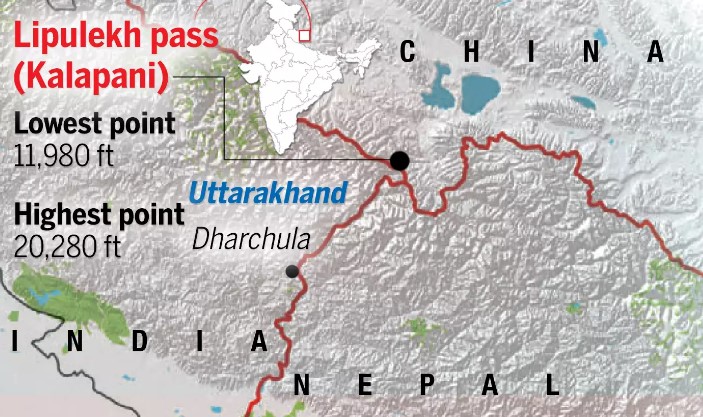Contents
- Urban employment as the focal point
- Uttarakhand is upgrading defence
URBAN EMPLOYMENT AS THE FOCAL POINT
Focus: GS-III Indian Economy
Introduction
- The contraction of the economy raises concern on the employment situation as the shrinking sectors are those that create the maximum new jobs.
- While the ‘Garib Kalyan Rojgar Abhiyaan’ could be an immediate relief, the scheme cannot be a substitute for decent urban jobs.
- Given the structure of the economy and demographic profile, it is important to focus on reducing the vulnerabilities of urban informal jobs in the long run.

Economy and employment
- The shrinking sectors that have been affected the most — construction (–50%), trade, hotels and other services (–47%), manufacturing (–39%), and mining (–23%) — are those that create the maximum new jobs in the economy.
- In a scenario where each of these sectors is contracting so sharply, it would lead to either a growing number of people losing jobs or failing to get one, or even both.
- This sharp contraction has to be seen in the light of India having witnessed a wave of massive ‘reverse migration’ during the early phase of the lockdown, with millions of workers returning to their home States due to a loss of livelihoods.
- It is doubtful as to when and whether they would return to their places of work, and it would not be unreasonable to assume that a majority of workers might not go back in the near future.
- Vulnerable employment is characterised by inadequate earnings, low productivity and difficult conditions of work that undermine the basic rights of workers.
- They are more likely to be informally employed and lack effective representation by trade unions.
There are two challenges policy interventions in securing the livelihoods of workers in urban areas have to address:
- To generate more jobs and
- To reduce vulnerabilities by providing decent wages and some form of job security.
Situation in India
- The high and persistent incidence of vulnerable employment are a reflection of the nature of the structural transformation process, whereby capital and labour transfer from low to higher value-added sectors.
- India presents a curious case in this regard as capital and labour are moving from low value-added activities in a sector to another sector, but not to higher value-added activities.
- The service sector-led growth in recent years has intensified this as there is coexistence of strong job creation in some Information and Communication Technology (ICT)-intensive services, along with a significant portion of the jobs being created in traditional low value-added services, where informality and vulnerable forms of employment are dominant.
- The outcome of such a process is the high incidence of informality which continues to undermine the prospects of reducing working poverty.
Way Forward: Steps to take
- Given the scale of urbanisation, the focus on urban employment generation programmes should be in coordination with local governments.
- As these problems are daunting, actors at the local level need to have more resources at their disposal and resource mobilisation could be enabled by the formation of local alliances, involving elected representatives, trade unions, entrepreneurs and community groups.
- A major local initiative can be taken up to design and implement employment-intensive investment policies.
- These policies should embrace the initiatives of both private entrepreneurs as well as by the government.
- Private investments need to be facilitated by conducive contractual relations between labour and capital.
- Small and micro enterprises, the fulcrum of industrialisation, need extra support to balance the interests between labour and capital as neither have collective bargaining powers.
- Prioritise urban infrastructure as it accounts for a large share of total investments in the local economy.
- A labour-intensive approach to building municipal infrastructure can be a cost-effective alternative to capital intensive-approach as wage rates are low.
- Infrastructure investments would spur employment, generate earnings and contribute to small enterprise formation.
- Construction of low-cost housing is another activity that can be carried out using labour-intensive methods, while yielding substantial collateral benefits for urban dwellers, as an ILO document establishes.
- An immediate launch of an urban employment scheme can be taken up, oriented toward building large-scale medical, health and sanitation infrastructure in cities and towns across India.
-Source: The Hindu
UTTARAKHAND IS UPGRADING DEFENCE
Focus: GS-III Internal Security Challenges
Introduction
In the context of ongoing tensions and territory issues with China and Nepal, the Uttarakhand government, along with the defence forces, has taken measures to strengthen infrastructure along its international border.
Why Uttarakhand matters?
- Uttarakhand shares a 350-km border with China and a 275-km boundary with Nepal. Five of the state’s 13 districts are border districts.
- Pithoragarh is strategically very sensitive as it has boundaries with both China and Nepal.

Radar and tactical airfields
- In the recent development, the Uttarakhand government has agreed to provide land to the Indian Air Force (IAF) to set up air defence radars in three districts bordering China – Chamoli, Pithoragarh, and Uttarkashi.
- The IAF has also proposed to develop a new Advanced Landing Ground to facilitate its activities in the hill areas.
Filling gaps in telecom infra
- The Uttarakhand cabinet has approved an amendment in the state’s information technology (IT) policy to provide incentives to facilitate private telecom companies to install towers in “dark villages” in which telecommunication facilities are unavailable at present.
- More than 400 “dark villages” have been identified in Uttarakhand, where no telecom service provider (TSP) or Internet service provider (ISP) extends services. These villages are mostly located along the state’s border of China and Nepal, government sources said.
- Also, villagers in border areas have traditionally acted as the eyes and ears of the defence forces, and telecommunications are a force multiplier in this regard.
-Source: Indian Express





